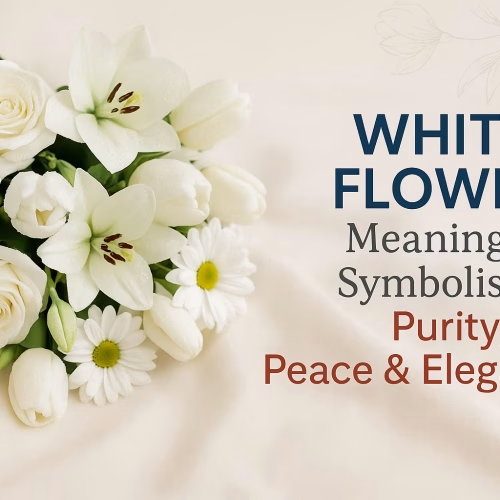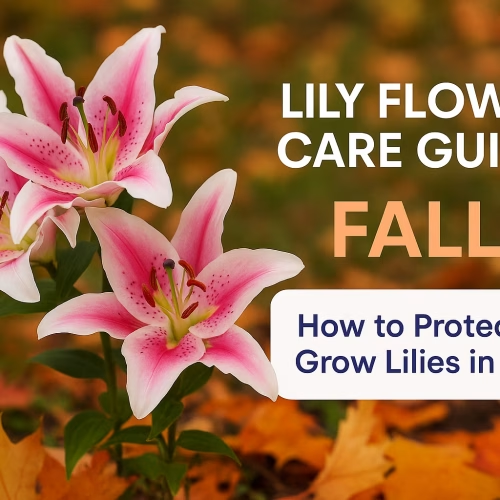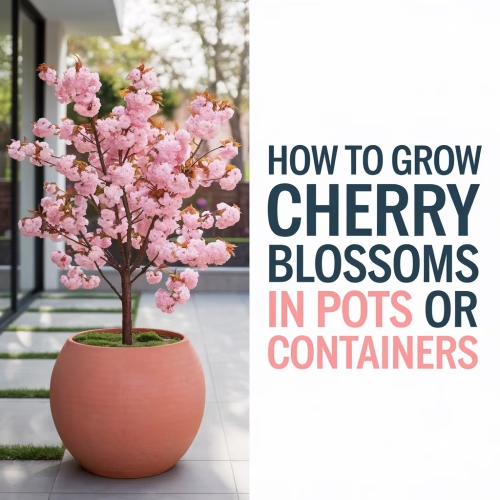How to Plant Cherry Blossom Trees in Fall: A Complete Guide for 2025
There’s something almost magical about cherry blossom trees. Those delicate pink and white blooms that arrive each spring can transform an ordinary yard into a breathtaking landscape. But here’s what many gardeners don’t realize: fall is actually one of the best times to plant cherry blossom trees. I know it might seem counterintuitive to plant a tree known for its spring beauty during the autumn months, but trust me—your future self will thank you for it.
When you plant cherry blossom trees in fall, you’re giving them a head start. The cooler temperatures and increased rainfall create ideal conditions for root development, allowing your tree to establish itself before the stress of summer heat arrives. Plus, you’ll be rewarded with those stunning blooms much sooner than if you’d waited until spring.
In this comprehensive guide, I’ll walk you through everything you need to know about planting cherry blossom trees in fall—from choosing the right variety to preparing the perfect planting hole, and all the care tips you’ll need to ensure your tree thrives for years to come.
Key Takeaways

Why Fall Is the Perfect Season to Plant Cherry Blossom Trees 🍂
Let me share something I learned from years of gardening: timing really is everything. When you plant cherry blossom trees in fall, you’re working with nature instead of against it.
The Science Behind Fall Planting
During autumn, trees enter a period called dormancy. Above ground, growth slows down dramatically. But underground? That’s where the magic happens. The soil is still warm from summer, encouraging vigorous root growth, while the cooler air temperatures reduce stress on the tree.
Here’s what happens when you plant in fall:
Fall vs. Spring Planting: The Real Difference
| Factor | Fall Planting | Spring Planting |
|————|——————-|———————|
| Root Development | 4-6 months before spring growth | Roots and foliage compete for resources |
| Water Requirements | Natural rainfall often sufficient | Frequent watering needed during dry summers |
| Transplant Shock | Minimal stress | Higher stress from heat and rapid growth |
| First Bloom Timeline | Often blooms the first spring | May take an extra year to bloom |
| Nursery Selection | Better availability and sales | Limited selection, higher prices |
If you’re interested in creating a comprehensive garden plan, check out these backyard garden design ideas that can help you envision where your cherry blossom tree will fit in your landscape.
Choosing the Right Cherry Blossom Variety for Your Climate Zone 🌸

Not all cherry blossom trees are suited for every climate. Before you plant cherry blossom trees, you need to understand which varieties will thrive in your specific zone.
Popular Cherry Blossom Varieties
Yoshino Cherry (Zones 5-8)
This is the iconic variety you see in Washington, D.C. It produces clouds of pale pink to white blossoms and grows 30-40 feet tall. Perfect for creating that classic cherry blossom experience.
Kwanzan Cherry (Zones 5-9)
If you want drama, this is your tree. The double-pink blooms are absolutely stunning, and it’s more heat-tolerant than Yoshino. It reaches 15-25 feet, making it ideal for smaller yards.
Weeping Cherry (Zones 5-8)
The cascading branches covered in pink blooms create a waterfall effect. These smaller trees (15-20 feet) work beautifully as focal points in garden beds.
Okame Cherry (Zones 6-9)
An early bloomer with vibrant pink flowers, this variety is more disease-resistant than others and offers gorgeous fall foliage in shades of orange and red.
Matching Your Zone to Your Tree
“The biggest mistake I see gardeners make is falling in love with a variety that simply won’t survive their winters. Always check your USDA hardiness zone first.” — Master Gardener Advice
To determine your zone, check the USDA Plant Hardiness Zone Map. Then select a variety rated for your zone or colder. Cherry blossoms need a certain number of “chilling hours” (temperatures between 32-45°F) to bloom properly, so choosing the right variety is essential.
When to Plant Cherry Blossom Trees in Fall: Timing Is Everything ⏰
The sweet spot for fall planting is 6-8 weeks before your first expected hard frost. This gives the roots enough time to establish before the ground freezes.
Regional Timing Guide
Pro tip: Check your local frost dates and count backward from there. If you’re also planning other fall garden projects, you can coordinate your planting schedule for maximum efficiency.
Signs It’s Too Late to Plant
If you’ve missed the fall window, it’s better to wait until early spring rather than rushing a late fall planting.
Step-by-Step Guide: How to Plant Cherry Blossom Trees in Fall 🌳

Now let’s get to the practical part. I’ll walk you through each step to ensure your cherry blossom tree gets the best possible start.
Step 1: Select the Perfect Location
Cherry blossom trees need:
Consider the view from your windows—you’ll want to enjoy those blooms from inside too! Also think about how the tree will look in all seasons, not just during bloom time.
Step 2: Prepare the Soil
This step is crucial and often overlooked. Great soil preparation can make the difference between a thriving tree and a struggling one.
Soil testing first:
Soil amendments:
For more tips on soil preparation, these beginner gardening tips cover the fundamentals beautifully.
Step 3: Dig the Perfect Planting Hole
Here’s the formula I always use:
The wide hole encourages roots to spread outward into the surrounding soil. A common mistake is digging too deep—this can cause the tree to settle and create problems with water pooling around the trunk.
Step 4: Prepare Your Tree
If your tree is in a container:
For balled-and-burlapped trees:
Step 5: Plant at the Correct Depth
This is critical: the root flare (where the trunk widens at the base) should be slightly above ground level. When you plant cherry blossom trees too deep, you’re inviting disease and decay.
Step 6: Backfill and Water Properly
Watering wisdom: Give your newly planted tree 10-15 gallons of water at planting time. This initial deep watering is essential for settling the soil and encouraging root contact.
Step 7: Mulch for Success
Apply 2-4 inches of organic mulch (shredded bark, wood chips, or leaf mulch) around the tree:
Step 8: Stake Only If Necessary
Most trees don’t need staking unless:
If staking is needed:
Essential Care for Newly Planted Cherry Blossom Trees 💧
The first year after you plant cherry blossom trees is the most critical. Here’s how to give your tree the best chance at thriving.
Watering Schedule
First month after planting:
Rest of first year:
Year two and beyond:
Winter Protection
Even though cherry blossoms are cold-hardy, newly planted trees benefit from extra protection:
Fertilizing Guidelines
First year: No fertilizer needed! The tree is focused on root development, and fertilizer can actually harm newly planted trees.
Second year and beyond:
Common Mistakes to Avoid When Planting Cherry Blossom Trees ❌

Learn from the mistakes I’ve seen (and made myself!) over the years:
Mistake #1: Planting Too Deep
This is the number one killer of newly planted trees. Always keep that root flare visible!
Mistake #2: Creating a Mulch Volcano
Piling mulch against the trunk creates the perfect environment for disease and pests. Keep it away from the bark.
Mistake #3: Overwatering
Yes, this is just as bad as underwatering. Soggy soil leads to root rot. Always check soil moisture before watering.
Mistake #4: Ignoring Drainage Issues
If your soil doesn’t drain well, either amend it extensively or choose a different location. Cherry blossoms will not tolerate standing water.
Mistake #5: Planting in Shade
Cherry blossoms need full sun to bloom abundantly. A shady location means fewer flowers and more disease susceptibility.
Mistake #6: Forgetting About Mature Size
That cute little tree will grow! Make sure you’ve allowed enough space for its mature height and spread.
Companion Planting Ideas for Cherry Blossom Trees 🌺
Once you plant cherry blossom trees, consider what to grow beneath and around them to create a cohesive landscape.
Spring Bulbs
Plant spring-blooming bulbs in fall for a spectacular show:
For inspiration on incorporating tulips into your design, check out these chic tulip decor ideas and tulip care tips.
Ground Covers
Choose shade-tolerant ground covers for beneath the canopy:
Perennials
Select plants that complement without competing:
Creating Seasonal Interest
Since cherry blossoms bloom for only 1-2 weeks, plan for multi-season interest. Consider adding beautiful fall flowers nearby to extend the visual appeal of your landscape.
Troubleshooting: First-Year Challenges and Solutions 🔧

Even with perfect planting technique, you might encounter some challenges. Here’s how to handle them:
Leaf Drop After Planting
Normal or problem? Some leaf drop is normal as the tree adjusts. If more than 30% of leaves drop, investigate further.
Solutions:
No Growth First Spring
Don’t panic! Remember: the tree is focusing on root development underground. You might not see much top growth the first year, and that’s perfectly fine.
Yellowing Leaves
Possible causes:
Test your soil and adjust watering schedule accordingly.
Deer or Rabbit Damage
Prevention is key:
Long-Term Care: Setting Your Tree Up for Decades of Beauty 🎋
When you plant cherry blossom trees with proper care, they can live 30-40 years or more. Here’s what they’ll need long-term:
Pruning Essentials
When to prune: Late spring or early summer, right after flowering
What to remove:
Never prune in fall or winter—this increases disease susceptibility.
Disease Prevention
Cherry blossoms can be susceptible to:
The best prevention is a healthy, well-placed tree with good air circulation and proper watering.
Annual Maintenance Checklist
✅ Early Spring: Apply slow-release fertilizer
✅ After Blooming: Prune as needed
✅ Summer: Deep water during drought periods
✅ Fall: Refresh mulch layer, remove fallen leaves to prevent disease
✅ Winter: Inspect for damage, apply tree wrap if needed
Integrating Cherry Blossoms Into Your Overall Garden Plan 🏡

Your cherry blossom tree shouldn’t exist in isolation—it should be part of a thoughtful garden design.
Creating a Japanese-Inspired Garden
Cherry blossoms are central to Japanese garden aesthetics. Consider adding:
Four-Season Garden Planning
Plan your garden to have interest year-round:
If you’re working with limited space, these tips on how to start a raised bed garden can help you maximize your planting area around your tree.
Low-Maintenance Landscaping
Busy schedule? You can still enjoy cherry blossoms! Combine your tree with low-maintenance gardening strategies that reduce your workload while maintaining beauty.
Enjoying the Harvest: Beyond the Blooms 🍒
While ornamental cherry blossoms don’t produce edible fruit like fruiting cherry trees, they still offer plenty to enjoy:
Photography Opportunities
Cherry blossom season creates incredible photo opportunities:
Hosting a Hanami Party
Embrace the Japanese tradition of “hanami” (flower viewing):
Preserving the Blooms
Extend your enjoyment:
Seasonal Mindfulness
Use your tree as a reminder to slow down and appreciate nature’s cycles—a perfect fit with mindful living principles.
Frequently Asked Questions About Planting Cherry Blossom Trees in Fall 🤔
Q: Can I plant cherry blossom trees in containers?
A: Yes! Dwarf varieties like ‘Snow Fountain’ work well in large containers (at least 20-24 inches diameter). They’ll need winter protection in colder zones.
Q: How long until my tree blooms?
A: Most trees bloom within 1-2 years when you plant cherry blossom trees in fall. Spring-planted trees may take an extra year.
Q: Do cherry blossoms need a pollinator?
A: Ornamental cherry blossoms are self-fertile and don’t require a pollinator tree.
Q: How messy are cherry blossom trees?
A: They drop petals for about a week during bloom time and may drop small fruits (if applicable). Overall, they’re no messier than most flowering trees.
Q: Can I grow cherry blossoms in containers if I live in an apartment?
A: Absolutely! Choose dwarf varieties and ensure your balcony or patio gets full sun. You might also enjoy growing herbs in small spaces alongside your tree.
Conclusion: Your Cherry Blossom Journey Begins This Fall 🌸
Planting cherry blossom trees in fall is one of the most rewarding gardening projects you can undertake. Yes, it requires some effort upfront—proper site selection, careful soil preparation, and attentive first-year care. But the payoff? Decades of breathtaking spring beauty that will make your heart skip a beat every single year.
Remember the key points:
The beauty of fall planting is that you’re working with nature’s rhythms. While you’re harvesting your fall garden crops and preparing beds for winter, you’re also planting hope and beauty for springs to come.
So grab your shovel, select your perfect cherry blossom variety, and get planting. Next spring, when those first buds appear, you’ll be so glad you took action this fall. Your future garden—and your future self—will thank you for it.
Ready to get started? The best time to plant a cherry blossom tree was last fall. The second-best time is this fall. Don’t wait another year to bring this stunning tree into your landscape. Your cherry blossom journey begins now! 🌸
—
SEO Meta Title and Description
Meta Title: How to Plant Cherry Blossom Trees in Fall | 2025 Guide
Meta Description: Learn how to plant cherry blossom trees in fall for stunning spring blooms. Complete guide with timing, variety selection, and care tips for 2025 success.
—
Image Prompts
IMAGE_PROMPT_1: Cover image in 1536×1024 landscape format showing a beautiful cherry blossom tree with delicate pink blooms in a fall garden setting with golden autumn leaves on the ground. Text overlay on the right side reads “How to Plant Cherry Blossom Trees in Fall” in large, bold, modern white and navy blue typography with “Cherry Blossom Trees” emphasized in maroon. Soft-toned background with plenty of negative space, clean and professional design, scroll-stopping and brand-friendly. All text perfectly aligned, centered, and fully visible within image boundaries.
IMAGE_PROMPT_2: Infographic in 1536×1024 landscape format showing a timeline for “Fall Planting Schedule by Zone” with three sections: Northern Zones (3-5) showing late August to mid-September, Middle Zones (6-7) showing September to early October, and Southern Zones (8-9) showing October to early November. Clean design with calendar icons, zone maps, and color-coded sections in navy blue, maroon, and white. All text perfectly readable, properly sized, and fully contained within image boundaries with no cut-off elements.
IMAGE_PROMPT_3: Detailed illustration in 1536×1024 landscape format showing a cross-section diagram of “How to Dig the Perfect Planting Hole” with labeled measurements: hole width 2-3 times wider than root ball, depth same as root ball, root flare visible above ground level. Clean educational style with arrows, measurements, and annotations. Soil layers visible, tree roots shown, mulch ring illustrated. All text labels clearly readable, professionally designed, nothing cropped at edges.
IMAGE_PROMPT_4: Beautiful square image in 1024×1024 format showing four popular cherry blossom varieties in a grid: Yoshino Cherry with pale pink blooms, Kwanzan Cherry with double-pink flowers, Weeping Cherry with cascading branches, and Okame Cherry with vibrant pink blossoms. Each quadrant labeled with variety name and zone information. Elegant design with white text on semi-transparent overlays, all text perfectly centered and readable.
IMAGE_PROMPT_5: Infographic in 1536×1024 landscape format titled “First Year Care Checklist” showing a seasonal wheel divided into four sections: Fall (planting and mulching), Winter (protection and monitoring), Spring (fertilizing and pruning), Summer (watering and maintenance). Icons for each task, color-coded by season with navy blue, maroon, orange, and green accents. All text clearly legible, well-spaced, and perfectly fitted within image boundaries.
IMAGE_PROMPT_6: Artistic square image in 1024×1024 format showing a close-up of cherry blossom branches with delicate pink and white blooms against a soft blue sky background. Overlay text reads “Common Mistakes to Avoid” with 3 key points listed: “Don’t Plant Too Deep,” “Avoid Mulch Volcanoes,” and “Never Overwater” in clean, modern white typography with navy blue accents. Text perfectly readable and positioned with ample negative space, nothing cut off at edges.




